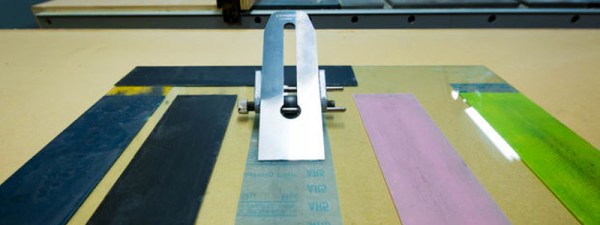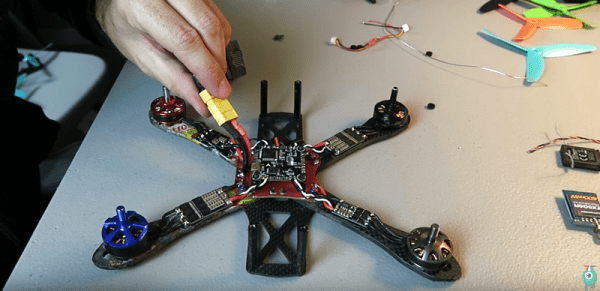The phrase “Tesla vs. Edison” conjures up images of battling titans, mad scientists, from a bygone age. We can easily picture the two of them facing off, backed by glowing corona with lightning bolts emitting from their hands. The reality is a little different though. Their main point of contention was Tesla’s passion for AC vs. Edison’s drive to create DC power systems to power his lights. Their personalities also differed in many ways, the most relevant one here being their vastly different approaches to research. Here, then, is the story of their rivalry.
Day: January 25, 2017
How To Sharpen Your Woodworking Tools On A Budget
Wood may seem like a soft, weak material if you’re used to working with steel, but to do good work, you’ll quickly learn you need your tools sharp. Buying and maintaining a good set of tools can be expensive for the home gamer, so [shopbuilt] put together an Instructable on how to sharpen your woodworking tools on a budget.
The trick is to use sandpaper. It’s a good quality abrasive material and is readily available. You’ll want a selection of different grits – low grits to get started, higher grits when finishing. The reason this is cheaper is that you can get a selection of 5-10 different sandpapers for under $20. Getting even a couple of decent sharpening stones wouldn’t be possible at that price. In the long run, they’ll last longer but this is a budget option we’re talking about.
Obviously you can’t just sharpen something with sandpaper – [shopbuilt] suggests mounting the paper to the flattest surface you can find. The use of a tempered glass panel from a fridge shelf is, in our mind, an inspired choice here. 3D printer enthusiasts have been using similar techniques for heated beds for the best part of a decade now.
We love woodworking here at Hackaday, so get your feet wet with these woodworking basics for the hardware hacker.
Frankenquad Takes To The Air
Modern quadcopter flight controllers perform a delicate dance of balancing pitch, yaw, bank, and throttle. They can do this thanks to modern MEMS gyros and accelerometers. The job is easy when the motors, propellers and speed controllers are relatively well matched. But what if they’re not? That’s the questions [SkitzoFPV] set out to answer by building Frankenquad. Frankenquad is a 250 sized FPV quadcopter with 4 different motors and 4 different propellers. The props are different sizes from different manufacturers, and even include a mix of 3 and 4 blade units. If all that wasn’t enough [SkitzoFPV] used 3 different electronic speed controller. Each speed controller has a micro running different firmware, meaning it will respond slightly differently to throttle inputs.
Keeping all this in check was [SkitzoFPV’s] branded version of the Raceflight Revolt R4 flight controller. The Revolt is powered by an STM32F4 series ARM microcontroller. Most of these controllers run variants of the cleanflight open source flight control software. The question was – would it be able to handle the unbalanced thrust and torque of 4 different power combinations?
The flight tests proved the answer was a resounding yes. The quad hovered easily. As the video shows [SkitzoFPV] went on to burn a few holes in the sky with it. Admittedly [SkitzoFPV] is a much better pilot than any of us. He did notice a bit of a bobble and a definite yaw toward the smaller propeller. Still, it’s rather amazing how easily a modern flight controller was able to turn a pile of junk-box components into a flying quadcopter. You can learn more about flight controllers right here.













